-
 Bitcoin
Bitcoin $105,494.8913
-0.47% -
 Ethereum
Ethereum $2,536.4217
-1.40% -
 Tether USDt
Tether USDt $1.0004
-0.01% -
 XRP
XRP $2.1454
-0.01% -
 BNB
BNB $646.4114
-1.24% -
 Solana
Solana $145.3845
-2.17% -
 USDC
USDC $0.9999
0.00% -
 Dogecoin
Dogecoin $0.1784
-0.97% -
 TRON
TRON $0.2706
0.26% -
 Cardano
Cardano $0.6262
-2.37% -
 Hyperliquid
Hyperliquid $40.2782
-4.49% -
 Sui
Sui $2.9638
-3.24% -
 Chainlink
Chainlink $13.2126
-1.58% -
 Bitcoin Cash
Bitcoin Cash $433.3696
-3.44% -
 UNUS SED LEO
UNUS SED LEO $9.1040
1.08% -
 Stellar
Stellar $0.2567
-1.45% -
 Avalanche
Avalanche $18.9764
-2.05% -
 Toncoin
Toncoin $2.9578
-2.28% -
 Shiba Inu
Shiba Inu $0.0...01205
-0.42% -
 Hedera
Hedera $0.1547
-2.62% -
 Litecoin
Litecoin $85.3396
-0.96% -
 Polkadot
Polkadot $3.7914
-1.26% -
 Ethena USDe
Ethena USDe $1.0003
-0.01% -
 Monero
Monero $312.3308
1.34% -
 Dai
Dai $0.9999
-0.01% -
 Bitget Token
Bitget Token $4.5283
-0.35% -
 Uniswap
Uniswap $7.4176
-2.51% -
 Pepe
Pepe $0.0...01099
-2.59% -
 Pi
Pi $0.6177
6.25% -
 Aave
Aave $276.0751
-3.58%
The characteristics of the limit-down board: How to identify the main force pretending to ship?
A limit-down board in crypto trading occurs when a token's price hits its maximum allowable drop, halting further declines to curb panic selling and volatility.
Jun 14, 2025 at 04:57 pm
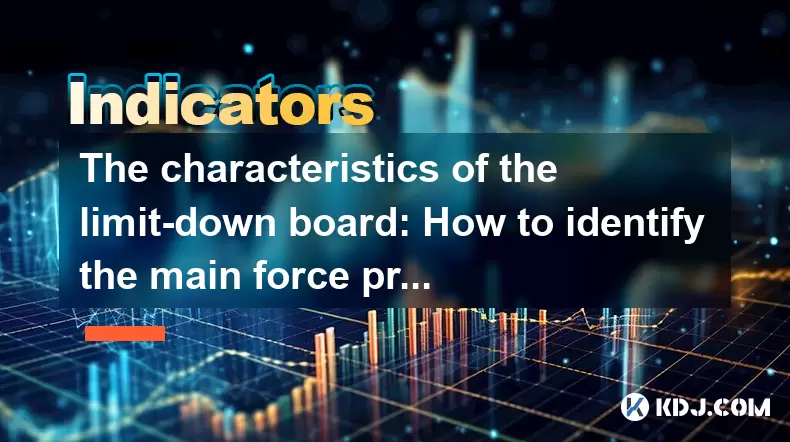
Understanding the Concept of a Limit-Down Board in Cryptocurrency Trading
In cryptocurrency trading, a limit-down board refers to a situation where an asset's price hits its maximum allowable downward movement within a specific time frame. This phenomenon is often observed on centralized exchanges that impose daily price fluctuation limits to prevent extreme volatility and protect traders from significant losses. When a cryptocurrency reaches this lower boundary, further selling pressure cannot push the price down any further during that session.
The limit-down board serves as a circuit breaker mechanism, halting trading temporarily or freezing prices until market conditions stabilize. This concept is borrowed from traditional stock markets but adapted for digital assets with much higher volatility. Traders must understand how these mechanisms work to avoid panic selling or misinterpreting market signals.
Characteristics of the Limit-Down Board in Crypto Markets
There are several notable characteristics associated with a limit-down board in cryptocurrency:
- Extreme Selling Pressure: A large volume of sell orders floods the order book, causing rapid price drops.
- Price Freeze at Lower Bound: Once the limit is reached, the price remains stagnant regardless of continued selling.
- Trading Halts or Reduced Liquidity: Exchanges may pause trading temporarily or reduce liquidity to manage volatility.
- High Emotional Impact: Fear dominates the market, leading to irrational decisions by retail investors.
These features create a unique trading environment where normal technical indicators may fail to provide accurate signals. Recognizing these patterns helps traders differentiate between genuine bearish trends and artificial manipulations by large players in the market.
How Institutional Players Use the Limit-Down Board for Manipulation
Large institutional players, often referred to as the "main force," can exploit the limit-down board to manipulate market sentiment and accumulate positions at favorable prices. Their strategies include:
- Pumping and Dumping: Initiating massive sell-offs to trigger a limit-down scenario, creating panic among retail traders who then sell off their holdings at depressed prices.
- Order Book Spoofing: Placing fake large sell orders near critical support levels to simulate intense selling pressure and push prices toward the limit-down threshold.
- Flash Crashes: Executing high-volume trades in milliseconds to artificially drive prices down before the market stabilizes.
By leveraging algorithmic trading tools and access to deep liquidity pools, these entities can orchestrate scenarios where the limit-down board becomes a tool for strategic accumulation rather than a protective measure.
Identifying Signs of Main Force Pretending to Ship
Recognizing when the main force is pretending to ship involves analyzing both on-chain and off-chain data. Key indicators include:
- Abnormal Volume Spikes Without Fundamental Reasons: Sudden surges in trading volume without corresponding news or events suggest manipulation.
- Large Whale Movements on Blockchain Explorers: Monitoring blockchain transactions for movements from known whale addresses indicates coordinated dumping.
- Discrepancies Between Price Action and Order Book Depth: If the price plummets rapidly while the order book shows minimal actual depth, it hints at spoofed orders.
- Market Depth Analysis: A thin order book just below major support levels implies that selling pressure isn’t as strong as it appears.
These signs require close monitoring using advanced charting tools and real-time analytics platforms. By combining technical analysis with behavioral insights, traders can better assess whether a limit-down board scenario is natural or manipulated.
Practical Steps to Detect and Respond to Fake Shipping Scenarios
To effectively navigate through potential main force pretending to ship situations during a limit-down event, follow these steps:
- Monitor Exchange Order Books in Real-Time: Use platforms like Binance, Bybit, or Kraken that offer detailed order book visualization. Look for sudden spikes in sell walls that disappear quickly — a common sign of spoofing.
- Check On-Chain Wallet Activity: Tools such as Etherscan, Blockchain.com Explorer, or Glassnode can help track large transfers from exchange wallets or known whale addresses.
- Utilize Volume Profile Indicators: Apply volume profile overlays on candlestick charts to identify areas where significant trading activity occurred versus artificial price drops.
- Cross-Reference News Feeds and Social Sentiment: Platforms like CoinGecko, CoinMarketCap, or crypto news aggregators help determine if the price drop aligns with real-world developments.
- Set Stop-Loss Orders Beyond the Noise Zone: Avoid placing stop-losses directly at obvious support levels that might be targeted by manipulators.
Each step should be executed methodically, ensuring that traders do not react impulsively to misleading market signals. These techniques empower traders to make informed decisions even in highly volatile and potentially manipulated environments.
Tools and Resources for Analyzing Limit-Down Events
Several analytical tools can assist traders in evaluating limit-down board scenarios more accurately:
- TradingView: Offers customizable indicators and alerts for spotting unusual trading behavior.
- Glassnode Studio: Provides on-chain metrics including whale transactions, exchange inflows/outflows, and realized price levels.
- CoinMetrics Community Edition: Delivers transparent market insights based on blockchain data.
- Deribit Position Tool: Useful for options traders to gauge market sentiment and open interest shifts during extreme moves.
- CryptoQuant: Tracks exchange balances and funding rates to detect abnormal accumulation or distribution patterns.
Using these tools together allows traders to build a comprehensive picture of market health and distinguish between organic corrections and orchestrated manipulations.
Frequently Asked Questions (FAQ)
Q: Can decentralized exchanges also experience limit-down boards?
A: Most decentralized exchanges (DEXs) do not have built-in price limits or circuit breakers due to their permissionless nature. However, smart contract-based DEXs may implement emergency shutdowns or price feeds with delay mechanisms to mitigate flash crash risks.
Q: How does a limit-down differ from a margin liquidation cascade?
A: A limit-down board is a regulatory or system-imposed price floor for a given period, whereas a margin liquidation cascade occurs when leveraged positions get automatically closed due to insufficient collateral, further driving the price down.
Q: Is it possible to profit from a limit-down event?
A: Yes, experienced traders can take advantage of limit-down scenarios by identifying early signs of capitulation and preparing counter-trend entries once the market stabilizes. However, this requires advanced risk management and deep understanding of market psychology.
Q: Do all cryptocurrencies face the same limit-down thresholds on exchanges?
A: No, each exchange sets its own rules for price limits based on asset volatility, trading pair, and market conditions. Some tokens with low liquidity may not have limit mechanisms at all, making them more susceptible to abrupt price swings.
Disclaimer:info@kdj.com
The information provided is not trading advice. kdj.com does not assume any responsibility for any investments made based on the information provided in this article. Cryptocurrencies are highly volatile and it is highly recommended that you invest with caution after thorough research!
If you believe that the content used on this website infringes your copyright, please contact us immediately (info@kdj.com) and we will delete it promptly.
- Coinbase (COIN) filed a brief in the U.S. Supreme Court case involving an Internal Revenue Service request for data
- 2025-06-15 09:25:11
- The race to launch altcoin and meme coin spot ETFs is heating up, with a mind-blowing 72 filings so far, including ones for dogecoin, XRP, and $TRUMP. However, not all of these have an equal chance of approval.
- 2025-06-15 09:25:11
- Uniswap (UNI) Draws Market Attention After Moving 9M Tokens to Coinbase Prime
- 2025-06-15 09:20:12
- Floki (FLOKI/USD) Up 7% in the Past 24 Hours as Bullish Momentum and New Utility Drive Price Action
- 2025-06-15 09:20:12
- PayPal Just Joined a Not-So-Exclusive Club — It Is the Latest Cryptocurrency Issuer to Escape Scrutiny by the US Securities and Exchange Commission
- 2025-06-15 09:15:13
- Floki FLOKI/USD is up 7% in the past 24 hours and 23% over the past 30 days, showing notable relative strength
- 2025-06-15 09:15:13
Related knowledge
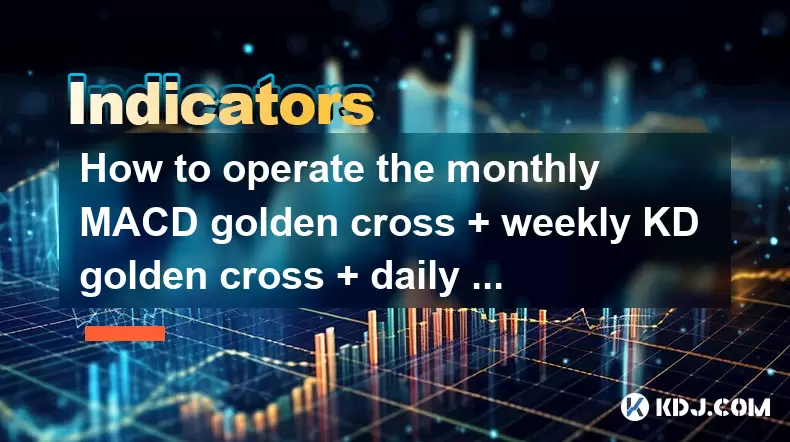
How to operate the monthly MACD golden cross + weekly KD golden cross + daily volume breakthrough?
Jun 15,2025 at 05:36am
Understanding the Strategy: Monthly MACD Golden CrossTo effectively operate the monthly MACD golden cross, traders must first understand what this signal entails. The MACD (Moving Average Convergence Divergence) golden cross occurs when the MACD line crosses above the signal line on a given chart timeframe. When this happens on the monthly chart, it sug...
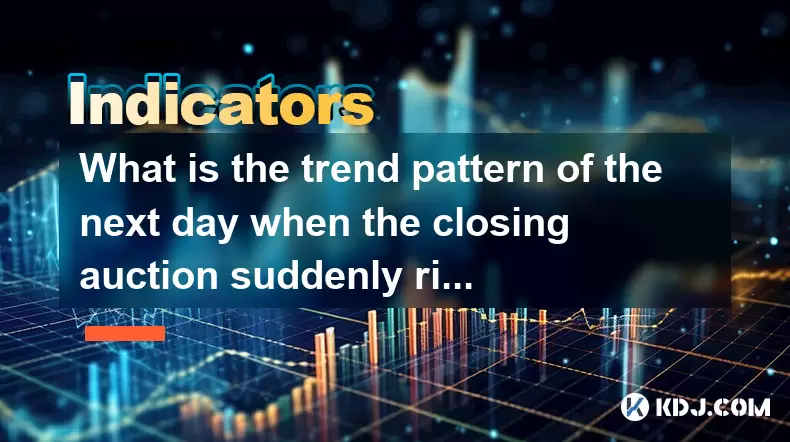
What is the trend pattern of the next day when the closing auction suddenly rises?
Jun 15,2025 at 08:15am
Understanding Closing Auctions in Cryptocurrency MarketsIn the context of cryptocurrency trading, a closing auction refers to a mechanism used by exchanges to determine the closing price of an asset at the end of a trading session. This process typically occurs within a short time window before the market closes for the day and aims to provide a fair an...
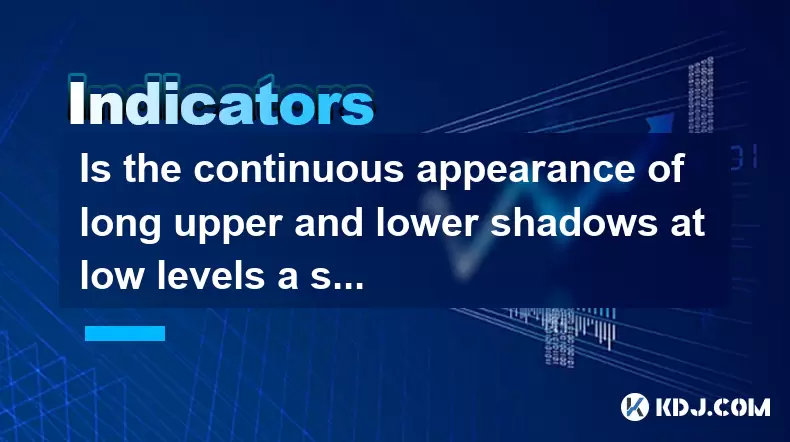
Is the continuous appearance of long upper and lower shadows at low levels a signal of accumulation?
Jun 15,2025 at 01:43am
Understanding Long Upper and Lower Shadows in Candlestick ChartsIn the world of cryptocurrency trading, candlestick patterns are widely used to analyze price movements. A long upper shadow, also known as a wick or tail, indicates that the price rose significantly during the period but was pushed back down by selling pressure. Conversely, a long lower sh...
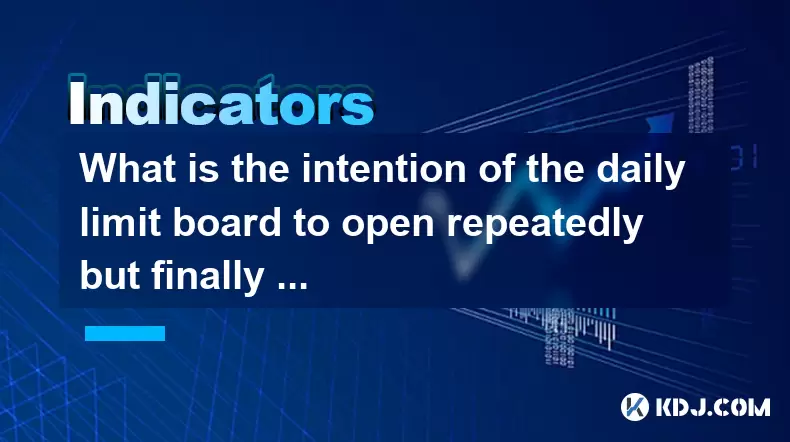
What is the intention of the daily limit board to open repeatedly but finally close?
Jun 15,2025 at 01:08am
Understanding the Daily Limit Board in Cryptocurrency TradingIn cryptocurrency trading, a daily limit board refers to a price movement restriction mechanism applied by certain exchanges or regulatory bodies. This mechanism is primarily used to prevent extreme volatility and panic selling or buying during periods of intense market fluctuation. When an as...

How to calculate the probability of trend continuation after the MACD column divergence?
Jun 14,2025 at 08:01am
Understanding MACD Column DivergenceThe Moving Average Convergence Divergence (MACD) is a widely used technical indicator in cryptocurrency trading. The MACD column, also known as the histogram, represents the difference between the MACD line and the signal line. When price makes a new high or low but the MACD histogram does not confirm this movement, a...
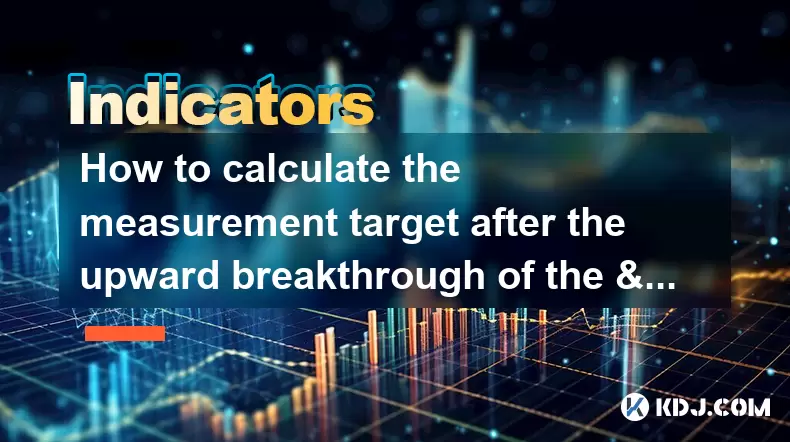
How to calculate the measurement target after the upward breakthrough of the "descending wedge"?
Jun 15,2025 at 05:00am
Understanding the Descending Wedge PatternA descending wedge is a technical analysis pattern typically found in price charts of cryptocurrencies. It is characterized by two converging trendlines: one drawn along a series of lower highs (resistance) and another connecting a series of higher lows (support). This pattern usually indicates a potential bulli...

How to operate the monthly MACD golden cross + weekly KD golden cross + daily volume breakthrough?
Jun 15,2025 at 05:36am
Understanding the Strategy: Monthly MACD Golden CrossTo effectively operate the monthly MACD golden cross, traders must first understand what this signal entails. The MACD (Moving Average Convergence Divergence) golden cross occurs when the MACD line crosses above the signal line on a given chart timeframe. When this happens on the monthly chart, it sug...

What is the trend pattern of the next day when the closing auction suddenly rises?
Jun 15,2025 at 08:15am
Understanding Closing Auctions in Cryptocurrency MarketsIn the context of cryptocurrency trading, a closing auction refers to a mechanism used by exchanges to determine the closing price of an asset at the end of a trading session. This process typically occurs within a short time window before the market closes for the day and aims to provide a fair an...

Is the continuous appearance of long upper and lower shadows at low levels a signal of accumulation?
Jun 15,2025 at 01:43am
Understanding Long Upper and Lower Shadows in Candlestick ChartsIn the world of cryptocurrency trading, candlestick patterns are widely used to analyze price movements. A long upper shadow, also known as a wick or tail, indicates that the price rose significantly during the period but was pushed back down by selling pressure. Conversely, a long lower sh...

What is the intention of the daily limit board to open repeatedly but finally close?
Jun 15,2025 at 01:08am
Understanding the Daily Limit Board in Cryptocurrency TradingIn cryptocurrency trading, a daily limit board refers to a price movement restriction mechanism applied by certain exchanges or regulatory bodies. This mechanism is primarily used to prevent extreme volatility and panic selling or buying during periods of intense market fluctuation. When an as...

How to calculate the probability of trend continuation after the MACD column divergence?
Jun 14,2025 at 08:01am
Understanding MACD Column DivergenceThe Moving Average Convergence Divergence (MACD) is a widely used technical indicator in cryptocurrency trading. The MACD column, also known as the histogram, represents the difference between the MACD line and the signal line. When price makes a new high or low but the MACD histogram does not confirm this movement, a...

How to calculate the measurement target after the upward breakthrough of the "descending wedge"?
Jun 15,2025 at 05:00am
Understanding the Descending Wedge PatternA descending wedge is a technical analysis pattern typically found in price charts of cryptocurrencies. It is characterized by two converging trendlines: one drawn along a series of lower highs (resistance) and another connecting a series of higher lows (support). This pattern usually indicates a potential bulli...
See all articles

























































































